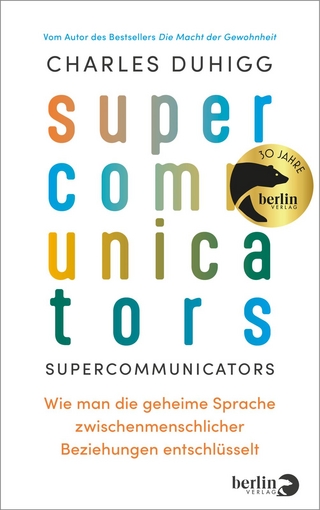
The Purposeful Argument: A Practical Guide with APA Updates
Wadsworth Publishing Co Inc (Verlag)
978-0-357-13866-3 (ISBN)
- Titel z.Zt. nicht lieferbar
- Versandkostenfrei innerhalb Deutschlands
- Auch auf Rechnung
- Verfügbarkeit in der Filiale vor Ort prüfen
- Artikel merken
Patricia Kennedy Bostian is the author of over 90 scholarly works for presses such as Greenwood and Facts on File. She also is the editor of the peer-reviewed scholarly journal TEACHING AMERICAN LITERATURE: A JOURNAL OF THEORY AND PRACTICE (http://cpcc.edu/taltp). For 29 years she has taught literature, composition and humanities courses for several two- and four-year institutions, including Central Piedmont Community College, the University of South Carolina and Johnson C. Smith University. She completed an M.A. in English and doctoral coursework in composition/rhetoric at the University of South Carolina and now is completing an M.A. in Humanities from California State University. Harry Phillips earned a Ph.D. in English from Washington State University (WSU) in 1994 and an M.A. in English with a minor in Education from North Carolina Central University in 1988. From 1994 to 2009, he was Instructor of English at Central Piedmont Community College in Charlotte, North Carolina, where he regularly taught Argument-Based Research and a range of American literature courses. He began teaching argument in 1993 at WSU and recommended that this course be a part of the North Carolina Community College Common Course Library, a suggestion that led to the course being adopted across the N.C. Community College system. He continues to view argument as an essential set of skills both for two- and four-year college students, as well as for everyday people intent on crafting effective communication. Dr. Phillips was Curator of Native Plants at the North Carolina Botanical Garden and the principal author of GROWING AND PROPAGATING WILD FLOWERS (University of North Carolina Press, 1985). Since retiring from CPCC, he spends his time as a mediator, climate crisis activist and avid gardener.
Part 1: How to Approach Argument in Real Life.
1. Argue with a Purpose. What Argument Is and What Argument Is Not. Excerpt from “The Price of Admission,” by Thomas Frank. Recognize Where Argument Is Appropriate in Real Life. Establish Local Context via the Research Process. Determine Your Audience. Establish Local Context for Your Issue. Connect Local and Global Contexts. Recognize Why Arguments Break Down. Arguments Break Down When They Do Not Persuade an Audience. Arguments Break Down When There Is a Lack of Balance in the Support. Arguments Break Down When the Audience Is Poorly Defined. Arguments Break Down When They Contain Fallacies. Arguments Break Down When They Do Not Fairly Represent Opposing Views. Match Argument with Purpose. Toulmin-Based Argument. Middle Ground Argument. Rogerian Argument. Argument Based on a Microhistory.
2. Explore an Issue that Matters to You. Determine What Matters to You and Why. School/Academic. Workplace. Family/Household. Neighborhood. Social/Cultural. Consumer. Concerned Citizen. Choose an Issue within a Topic. Pre-Think about Your Issue. Brainstorming. Freewriting. Mapping. Move from Boring to Interesting. Define and Target Your Audience. Stake, Defend, and Justify Your Claim. Develop a Claim, Reasons, and Qualifiers. Argue with a Purpose. Vary the Types of Support You Bring to an Argument. Support Based on Fact. Support Based on Your Character. Support Based on the Emotions of an Audience. Working with a Target Audience: Two Examples. Argue at the Right Moment. Getting Started.
Part 2: How to Establish Context Through Research.
3. Develop a Research Plan. Use Reference Works, Encyclopedias, and Topic Overviews Profitably. Read an Overview of Your Topic. Gather Search Terms. Use Search Engines to Find Internet Sources on the Surface. Web and on the Deep Web. Search the Surface Web. Search the Deep Web. Perform Keyword Queries. Find News Sites and Use RSS Feeds to Receive Updates. Find and Use Databases in Libraries. Find and Use Primary Sources. Find and Use Government Sources. Find and Use Multimedia Sources. Find Books. Find Books in Libraries. Find Books on the Internet.
4. Evaluate and Engage with Your Sources. Take Notes, Read Critically, and Evaluate Internet Sites. Critically Read Material on the Internet. Evaluate Internet Sites. Take Notes, Read Critically, and Evaluate Articles. Read Articles Critically. Reading Strategies for Longer Articles. Evaluate Articles. Take Notes and Read Books Critically. Take Notes and Evaluate Primary Sources. Introduce and Comment on Sources. Quote and Cite Quotations. Quoting Material Quoted in the Original Source. Alter Quoted Material. Summarize and Cite Summaries. Summary Checklist. Paraphrase and Cite Paraphrases. Avoid Plagiarism. Documentation: Works Cited Page.
5. Read Critically and Avoid Fallacies. Define Fallacies. Identify and Avoid Fallacies. Avoid Fallacies of Choice. Blanket Statement. False Dilemma, Either–Or, and Misuse of Occam’s Razor. Slippery Slope. Avoid Fallacies of Support. Circular Argument. Hasty Generalization and Jumping to Conclusions. Faulty Causality: Post Hoc, Ergo Propter Hoc. Non Sequitur, Red Herring, and False Clue. Straw Man Argument or Argument Built on a False Fact or Claim. Avoid Fallacies of Emotion. Ad Hominem. Testimonials and False Authority. Bandwagon. Ad Misericordiam. Scare Tactics. Avoid Fallacies of Inconsistency. Moral Equivalence. Material Equivalence. Definitional Equivalence. Inconsistent Treatment (from Dogmatism, Prejudice, and Bias). Equivocation. False Analogy.
6. Work Fairly with the Opposition. Why the Opposition Matters. Resist Easy Generalizations. Listen to Local Voices. Summarize Other Voices Fairly. Value Expertise over Advocacy. Avoid Bias When You Summarize. Find Points of Overlap. Identify Common Ground with the Opposition. Respond to Other Views.
Part 3: How to Plan, Structure, and Deliver an Argument.
7. Explore an Issue. Use Definitions. Seven Types of Definition. Discover Causes or Consequences. Present Comparisons. Propose a Solution. Section A: Exploring the Problem. Section B: Different Types of Exploration. Section C: Exploring Implementation. Evaluate Your Claim. Write an Exploratory Essay. Sample Exploratory Essay.
8. Consider Toulmin-Based Argument. Construct an Argument to Fit Your Purpose. Terms of Toulmin-Based Argument. Claim. Reasons. Support. Warrant. Backing. Rebuttal. Qualifiers. Map a Toulmin-Based Argument. Student-Authored Toulmin-Based Argument.
9. Consider Middle Ground Argument, Rogerian Argument, and Argument Based on a Microhistory. Middle Ground Argument. Make a Middle-Ground Position Practical. Recognize Where Middle Ground Arguments Are Possible. Map a Middle Ground Argument. Student-Authored Middle Ground Argument. Rogerian Argument. Listen Closely to the Opposition. Identify Common Ground. Map a Rogerian Argument. Sample Rogerian Argument. Argument Based on a Microhistory. Focus on the Local and Specific. Make Room for Local Histories. Work with Primary Materials. Subjects and Materials for Microhistories. Map an Argument Based on a Microhistory. Sample Argument Based on a Microhistory.
10. Build Arguments. How a Claim Functions. Claim: The Center of Your Argument. Connect Claim with Purpose. Five Kinds of Claims. Claim of Fact. Claim of Definition. Problem-Based Claims. Claim of Evaluation. Claim of Cause. Use Reasons to Support Your Claim. Build Body Paragraphs around Reasons. Use Qualifiers to Make Your Argument Believable. Justify Your Claim with a Warrant. Use Your Audience to Construct a Warrant. Know What Your Audience Values. Let a Warrant Bridge Claim and Support. Use Backing to Support a Warrant. Let Your Audience Determine the Extent of Backing. Make Backing Specific. Respond to Audience Reservations to Make a Warrant Believable.
11. Support an Argument with Fact (Logos), Credibility (Ethos), and Emotion (Pathos). Field-Specific Support. Find Support for the Physical Sciences. Find Support for Education, History, and Social and Behavioral Sciences. Find Sources for the Humanities and the Arts. Use All Three General Kinds of Support. Use Support Based on Facts and Research (Logos). Facts and Opinions. Statistics. Scholarly Articles. Use Support to Create Credibility (Ethos). Use Support to Create Emotion (Pathos). Anecdotes. Photographs. Using Humor in Your Arguments.
Part 4: How to Take Ownership of Your Argument: A Style Guide.
12. Enhance Your Argument With Visuals. What Are Visual Arguments? Understanding and Using Visual Arguments. Reading Photographs and Illustrations. Using Photographs and Illustrations in Your Argument. Reading Graphs and Charts. Using and Creating Graphs in Your Argument. Reading Advertisements.
13. Develop and Edit Argument Structure and Style. Consider Your Argument’s Claim. Introduce Your Claim. State Your Claim. Position Your Claim. Introduce Your Counterarguments. The Counterargument Is Incorrect. The Counterargument Is Correct, But . . . Create Strong Introductions. Anecdote. Misdirection. Conflict. Suspense. A Seeming Impossibility. Write Memorable Conclusions. Broadening Out. Opposition. Circling Back. Edit and Organize Your Argument’s Support. Edit Support. Organize Your Support. Three Organization Samples of Body Paragraphs. Supply a Strong Title. Participate Effectively in a Peer Review Session. Your Role as a Reviewer. Your Role as a Reviewee.
Part 5: An Anthology of Arguments. Intersections Contemporary Issues and Arguments.
Anthology 1: School and Academic Community. Karoun Demirjian, What is the Price of Plagiarism? Jon Marcus and Holly K. Hacker, The Rich-Poor Divide on America’s College Campuses is Getting
Wider, Fast. Keith Ellison, The Argument for Tuition-Free College. Katie Reilly, Record Numbers of College Students Are Seeking Treatment for Depression and Anxiety—But Schools Can’t Keep Up.
Anthology 2: Workplace Community. Gar Alperovitz and Keane Bhatt, Employee-Owned Businesses Ignored by Mainstream Media. Tim Kastelle, Hierarchy Is Overrated. Jan Edwards and Molly Morgan, Abolish Corporate Personhood (Thinking Politically). Rich Meneghello, Solutions at Work: When Love Enters the Workplace.
Anthology 3: Family and Household Community. Sue Ferguson, Leaving the Doors Open. Jewel, Street Life Is No Life for Children. Richard Louv, Introduction from Last Child in the Woods. Dahr Jamail, A Morally Bankrupt Military: When Soldiers and Their Families Become Expendable.
Anthology 4: Neighborhood Community. Barbara Nichols, Airbnb is Crashing the Neighborhood. Eleanor Novek, You Wouldn’t Fit Here. James Q. Wilson, Bowling with Others. Noah Smith, The Poor Don’t Deserve Toxic-Waste Dumps in Their Backyards.
Anthology 5: Social/Cultural Community. Daniel J. Solove, Why “Security” Keeps Winning Out Over Privacy. Vince Dixon, The Case Against Tipping in America. Ronald Davis, My Truth About Being A Black Man And A Black Cop. Jeff Yang, Killer Reflection.
Anthology 6: Consumer Community. Judith Simmer Brown, A Buddhist Perspective on Consumerism. Matt Stannard, Seizing the Public Banking Moment. Andy Kroll, How the McEconomy Bombed the American Worker: The Hollowing Out of the Middle Class. Dali L. Yang, Outsourcing Compromises the Safety and Quality of Products.
Anthology 7: Concerned Citizen Community. Harry Binswanger, The United States Should Adopt Open Immigration. James L. Dickerson, Climate Change Could Cause Disease Resurgence. David Howard, Automatic Voter Registration: A Rational Solution to an Irrational Problem. David Kelley, Private Charity Should Replace Welfare.
Anthology 8: Classic American Arguments (MINDTAP only). Susan B. Anthony, On Women’s Right to Vote. Mary Antin, Have We Any Right to Regulate Immigration? Alexander Hamilton, The Federalist No. 6. Thomas Jefferson, In Congress, July 4, 1776. H. L. Mencken, The Penalty of Death. Judith Sargent Murray, On the Equality of the Sexes. Leo Szilard And Cosigners, A Petition to the President of the United States. Sojourner Truth, Ain’t I a Woman? Booker T. Washington, Atlanta Compromise Address.
Part 6: MLA and APA Documentation Systems.
APPENDIX A: MLA Documentation and the List of Works Cited.
APPENDIX B: APA Documentation and the Reference List.
Glossary.
Index.
| Erscheinungsdatum | 02.01.2020 |
|---|---|
| Verlagsort | Belmont, CA |
| Sprache | englisch |
| Maße | 189 x 233 mm |
| Gewicht | 839 g |
| Themenwelt | Sachbuch/Ratgeber ► Beruf / Finanzen / Recht / Wirtschaft ► Briefe / Präsentation / Rhetorik |
| Schulbuch / Wörterbuch ► Wörterbuch / Fremdsprachen | |
| Geisteswissenschaften ► Sprach- / Literaturwissenschaft ► Sprachwissenschaft | |
| ISBN-10 | 0-357-13866-X / 035713866X |
| ISBN-13 | 978-0-357-13866-3 / 9780357138663 |
| Zustand | Neuware |
| Haben Sie eine Frage zum Produkt? |
aus dem Bereich


